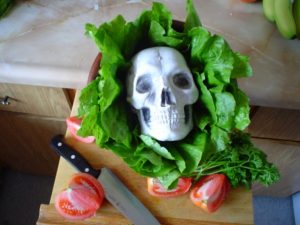Technology Networks reports that when vegetable farmers harvest crops, they often rely on postharvest washing to reduce any foodborne pathogens, but a new University of Georgia study shows promise in reducing these pathogens — as well as lowering labor costs — by applying sanitizers to produce while it is still in the fields.
Salmonella, Shiga toxin-producing E. coli and Listeria monocytogenes are major causes of foodborne diseases and of public health concern in the U.S. Tomato-associated salmonella outbreaks reported to the Centers for Disease Control and Prevention have increased in frequency and magnitude in recent years, and fresh produce accounted for 21% of E. coli outbreaks reported to the CDC over a 20-year span.
 Initially researchers were going to study the use of a nonchlorine-based sanitizer made of two food additives approved by the U.S. Food and Drug Administration — levulinic acid and sodium dodecyl sulfate — as a postharvest wash solution. However, at the suggestion of a producer involved in the study — Bill Brim of Lewis Taylor Farms in Tifton, Georgia — they designed the study using the solution in a preharvest spray, said Tong Zhao, associate research scientist with the Center for Food Safety on the UGA Griffin campus.
Initially researchers were going to study the use of a nonchlorine-based sanitizer made of two food additives approved by the U.S. Food and Drug Administration — levulinic acid and sodium dodecyl sulfate — as a postharvest wash solution. However, at the suggestion of a producer involved in the study — Bill Brim of Lewis Taylor Farms in Tifton, Georgia — they designed the study using the solution in a preharvest spray, said Tong Zhao, associate research scientist with the Center for Food Safety on the UGA Griffin campus.
While producers commonly use chlorine-based disinfectants — including chlorine gas, sodium hypochlorite, calcium hypochlorite and chlorine dioxide — to treat produce postharvest, the preharvest application of bactericides is not a common practice, Zhao said.
Building on previous studies of levulinic acid and sodium dodecyl sulfate that showed the combination substantially reduces both salmonella and E. coli on romaine lettuce without adversely affecting lettuce quality, Zhao hoped to prove the combination’s effectiveness on reducing foodborne pathogens on tomato plants contaminated with salmonella, Shiga toxin-producing E. coli and Listeria monocytogenes.
In the field studies, the spray treatment significantly reduced the total bacterial population on the surface of tomatoes, determining that this preharvest treatment is a practical, labor-cost effective and environmentally friendly approach for the control and reduction of foodborne pathogens. The study was recently published in the journal Food Control.
“This combination of chemicals had never been used for preharvest treatment,” said Zhao, who studied the combination 10 years ago as an alternative to chlorine treatment as a postharvest wash. “Free chlorine is easily neutralized by organic
